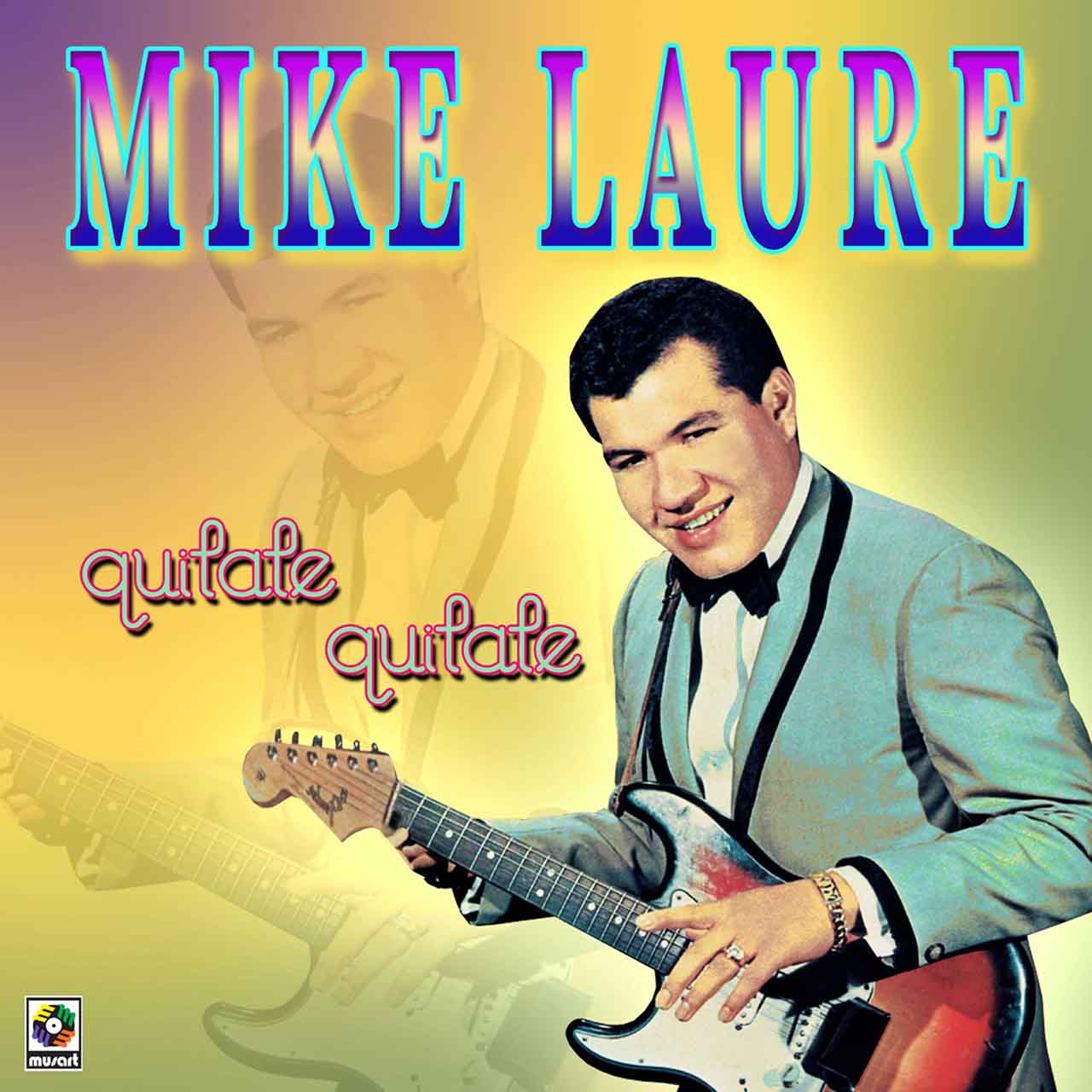The first electric guitar in Chapala, México is said to have arrived in the hands of Miguel Laurel Rubio, the artist who called himself Mike Laure (pronounced Mikay Lau-rey). In 1957, Laure christened his band Mike Laure y sus Cometas in an unveiled homage to Bill Haley and his Comets. The Mexican group soon had the kids in the Jalisco resort town dancing rock-and-roll at the lakeside Beer Garden restaurant, where they crowded the house performing numbers like “El Estudiante del Rock,” a Spanish version of Fats Domino’s “Ain’t That a Shame.”
By 1961, Haley himself was living in Mexico, where he arrived along with the twist, and started promoting the new dance craze with songs he surprisingly recorded in Spanish. Laure, always hip to new sounds, quickly turned out his own singles like “Cacahuete Twist,” which riffs on the Cuban classic “The Peanut Vendor,” “Manzanillo Twist,” and “La Guitarra Feliz.” The grooving guitar, wailing sax and pulsing maracas on those tracks would serve as fuel for a new Mexican sensation, surf rock, which by 1964 was the new wave on the beaches and beyond.
Laure had pounded out rhythms on empty bottles as a toddler and played in a band with neighborhood kids. He started his professional career while still a teen as a drummer with a hotel club act. To fulfill his dream of playing rock and roll, he traveled to Mexico City to buy an electric guitar. But despite the overnight local success he’d had at the Beer Garden, he realized that rock would only take him so far on Mexico’s national scene. Laure, together with his band members, started searching for new sounds, this time looking to Central and South America.
Listen to the best of Mike Laure now.
Raúl Rubio, the group’s saxophonist, later recalled that they listened to records from Colombia, Venezuela, and El Salvador and explored the genres they heard. They began to play cumbia, adapting to the syncopated beats. Incorporating accordion, drums, guiro, guitars, saxophone, bass, conga, and clarinet, Mike Laure y sus Cometas developed a style of cumbia that was traditionally tropical and at the same time, as described by his cousin Chelo Rubio, “very rock and roll.”
As early as the 1940s, cumbia had migrated from Colombia to Mexico. Introduced by big bands around the same time that Cuban music was gaining popularity in Mexico, it had not yet evolved into the style that would become blended into the Mexican popular music mainstream. Laure was a pioneer of that fusion. By the 1970s, the sound would become known as Mexican cumbia.
Mike Laure y sus Cometas’ take on cumbia would bring the group its first hit on the Mexican charts: “Tiburón a la Vista” (“Shark in Sight”) was an instant classic whose popularity quickly spread around Latin America and became an all-ages party staple. The group continued its winning streak on the charts with “La Cosecha de Mujeres,” (“The Women Harvest”) a playful tune that can be looked back at as a macho “It’s Raining Men” of its time.
On the novelty tune “La Banda Está Borracha” Laure plays with combining ranchera elements with cumbia while satirizing classic Mexican drinking songs as the band purposefully plays out of tune and sings “drunk.”
Laure also embraced the influence of Cuban music, recording danceable modern boleros that enter pop territory. They include the popular “Palabras de Mujer,” “No Llores,” and “Mazatlán,” a tribute to the Mexican coastal city, written by the composer Gabriel Ruiz, sung to a cha-cha-cha beat.
Laure became known as the King of Tropical Music, and he continued to create successful takes on Latin styles (another was merengue, best showcased on the song “La Secretaria,” whose fresh style foreshadowed the sound of Elvis Crespo’s “Suavamente”). But he never abandoned his rock-n-roll attitude. Laure recorded dozens of albums and maintained a hectic schedule of concerts and television appearances, guided by his good-time spirit. At the end of the 1980s, he stopped performing, and his health declined. Laure was just 63 when he died in Mexico City on November 17, 2000, leaving a legacy of innovation to generations of Latin musicians.
Listen to the best of Mike Laure now.



